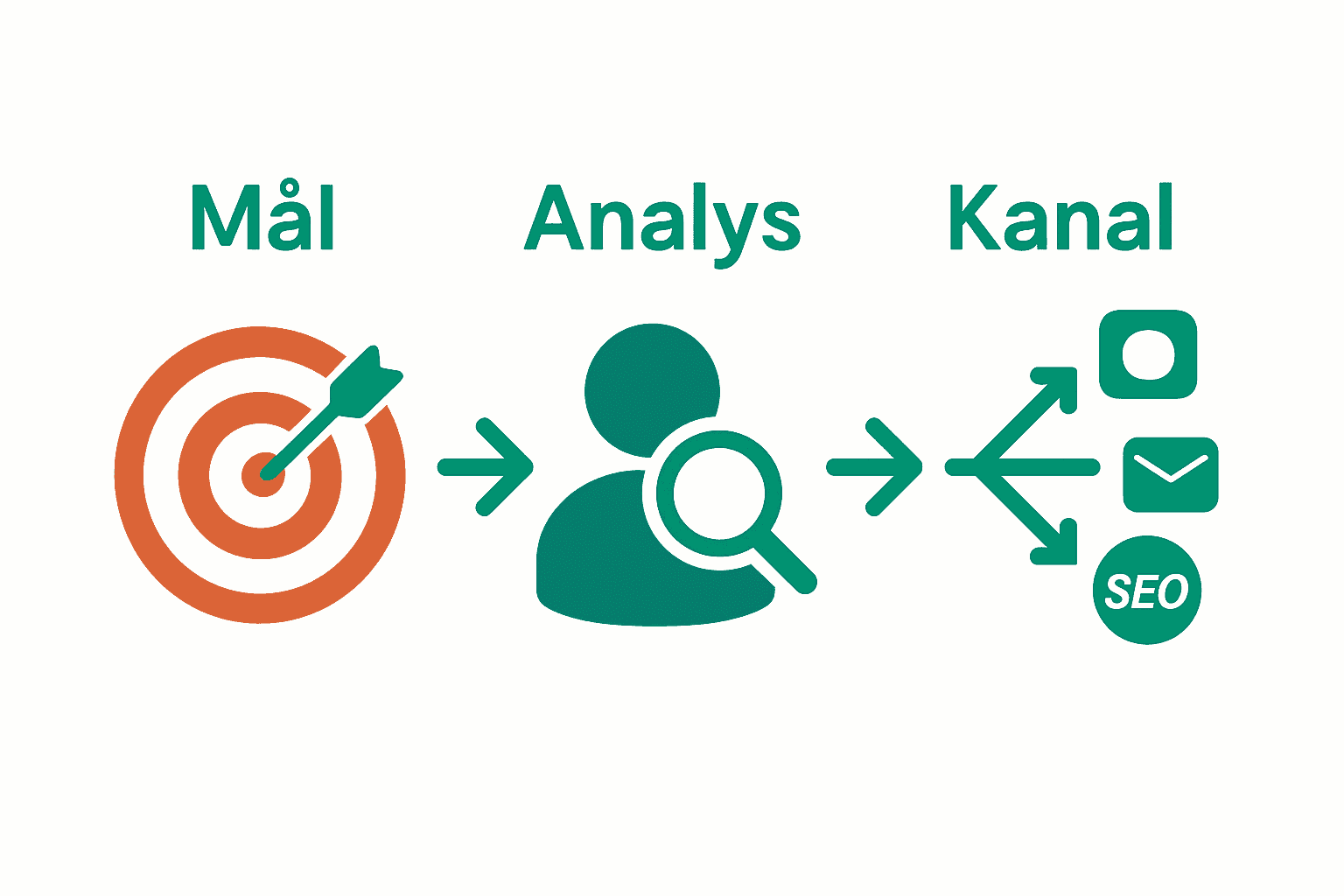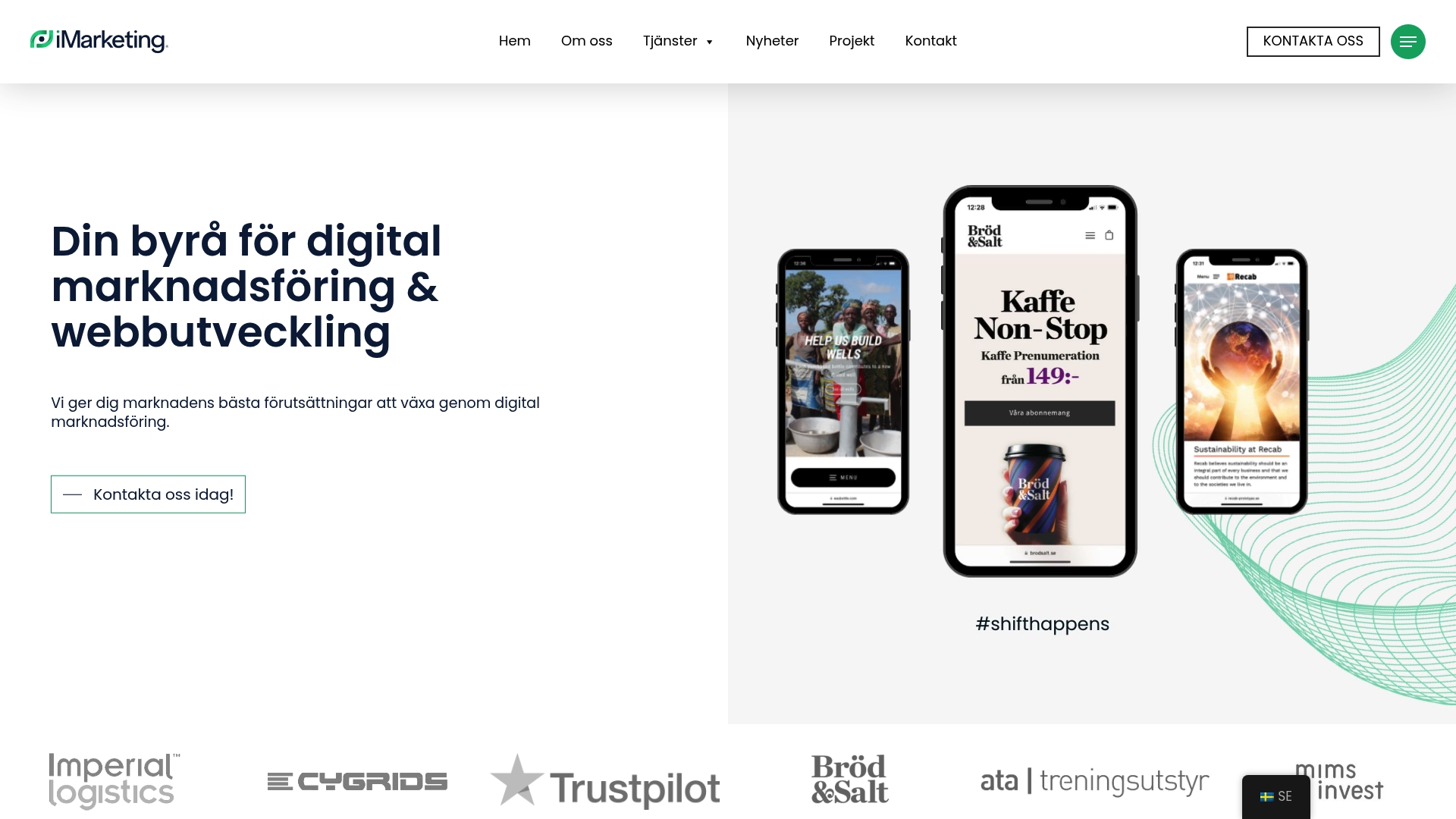Did you know that companies that work strategically with digital marketing can experience up to 30 percent faster growth compared to its competitors? In an era where more and more purchasing decisions start online, it is crucial to have a clear plan for each step. Here you will find concrete advice for setting goals, reaching the right customer and making smart channel choices that deliver real results.
Quick summary
| Key points | Explanation |
|---|---|
| 1. Define concrete digital goals | Use the SMART framework to formulate specific, measurable, and time-bound goals to drive growth. |
| 2. Conduct a target audience analysis | Focus on demographic and psychographic data to create detailed customer personas that effectively target your campaigns. |
| 3. Choose the right digital channels | Analyze where your target audience is active to choose the most effective channels for engagement and visibility. |
| 4. Create an action plan and budget | Develop a detailed plan that allocates resources and budget towards defined goals to maximize returns. |
| 5. Measure and evaluate results continuously | Use metrics and tools to analyze marketing effectiveness and adjust strategy based on the insights. |
Table of contents
- Step 1: define the company's digital goals
- Step 2: identify and analyze the target audience
- Step 3: choose appropriate digital channels
- Step 4: create an action plan and budget
- Step 5: measure and evaluate marketing results
Step 1: Define your company's digital goals
When you start your digital marketing journey, the first step is to create clear and achievable goals that drive your business growth. By using the SMART framework, you can ensure that your digital goals are well-defined and strategically aligned.
Start with a thorough digital marketing audit. According to Harvard Business School Online This is crucial to understanding past performance and establishing relevant key performance indicators. Look at existing results and identify areas with potential for improvement.
When defining your digital goals, it’s important to be specific. Instead of a vague goal like “increase sales,” aim for something more specific like “increase online sales by 25% over the next six months through targeted social media campaigns.” According to Monash University your goals should be:
- Specific
- Measurable
- Achievable
- Relevant
- Time-bound
Pro Tip: Don't forget to link your digital goals directly to overall business strategies for maximum impact.
Select 2-3 primary goals which could be:
- Increase brand awareness
- Generate more leads
- Improve customer engagement
- Increase online sales
The key is to document these goals and ensure that your entire team understands them. This creates a common direction and allows for effective tracking and evaluation.
In the next step, we will dive deep into how you can develop a concrete strategy to achieve these goals.
Step 2: Identify and analyze the target audience
Once you’ve defined your digital goals, the next critical step is to understand exactly who you want to reach. A solid audience analysis is essential to creating effective marketing strategies that truly resonate with the right people.
According to Credo Modern audience analytics is about going beyond demographic data and truly understanding your audience’s interests, behaviors, and challenges. You need to build detailed personas that help you tailor your message.
Start with basic demographic mapping:
- Age
- Sex
- Geographic location
- Income level
- Educational background
Then you delve into psychographic aspects:
- Interests
- Lifestyle
- Values
- Digital habits
- Consumption patterns
Pro Tip: Use tools like Google Analytics and social media platform insights to gather genuine data about your current and potential audience.
Then create detailed customer personas. Give them names. Describe their daily challenges. Understand which digital channels they use and how they consume content.

In the next step, we will explore how to transform this knowledge into a powerful digital marketing strategy.
Step 3: Select appropriate digital channels
Now that you understand your target audience, it’s time to choose the digital channels that give you the greatest opportunity to reach and engage them. Each channel has its unique advantages and suits different marketing goals.
According to the latest research review, there are several effective digital marketing channels to choose from. Practical guides emphasizes the importance of adapting channel selection to audience behavior and your specific campaign goals.
Main channels to consider:
- Social Media
- SEO and search engine marketing
- Email marketing
- Content marketing
- Video marketing
- Affiliate marketing
- Influencer collaborations
Choose channels by answering a few key questions:
- Where does your target audience spend the most time?
- Which channels best suit your products or services?
- What is your main goal?
Pro Tip: Focus on a few channels where you can deliver high-quality content rather than spreading yourself too thin.
Research data from 2025 shows that the combination of marketing tools can yield optimal results. Experiment and continuously measure which channels yield the best return.
In the next step, we will delve into how to create engaging content for these channels.
Here is a comparison of the main digital marketing channels:
| Channel | Benefits | When to use |
|---|---|---|
| Social Media | Broad involvement Strong brand |
When the target audience is active there |
| SEO & search engine marketing | Long-term visibility Organic traffic |
To capture interest and drive traffic |
| Email marketing | Direct contact Personalization |
For recurring campaigns |
| Content marketing | The land as an expert Builds trust |
When training is needed |
| Video marketing | High visual impact Shareable |
When storytelling or product display |
| Affiliate marketing | Performance-based Increased range |
In partnerships and launches |
| Influencer collaborations | High credibility Strong influence |
For new target groups Trending products |
Step 4: Create an action plan and budget
Now it’s time to flesh out your digital marketing strategy by creating a feasible action plan and budget. This step turns your goals from theory into practical reality.
According to Harvard Business School Online, budget allocation is directly linked to measuring success. You need to allocate funds that support your specific marketing goals and allow for effective performance tracking.
Budget planning consists of several important components:
- Content creation costs
- Advertising and campaign budget
- Tools and technical solutions
- Human resources
According to Monash University, there are two primary strategies for resource management:
- Internal implementation with existing staff
- External collaboration with specialists
Pro Tip: Set aside at least 10% of your budget for experimentation and unforeseen opportunities.
When allocating budget, you should prioritize channels such as:
- Generates the greatest return
- Fits your target audience
- Supports your overall goals
Use marketing tools that help you track and optimize your investments.
In the next step, we will focus on implementation and continuous optimization of your strategy.
Step 5: Measure and evaluate marketing results
The final step in your digital marketing plan is to systematically measure and analyze your results. This is crucial to understanding what works and continuously improving your strategy.
Harvard Business School Online recommends establishing clear key metrics that cover the entire customer journey. These include:
- Awareness
- Click-through rate (CTR)
- Customer acquisition cost (CAC)
- Return on Investment (ROI)
- Return on advertising spend (ROAS)
According to research, you can use the Balanced Scorecard framework for a more comprehensive evaluation that covers:
- Customer perspective
- Business value
- Internal processes
- Growth and innovation
Pro Tip: Don't just focus on end results, but also measure intermediate results in the customer's buying journey.
Choose the right marketing tools that will help you track and visualize these key metrics effectively.

As you evaluate the results, be prepared to quickly adjust your strategy based on the insights. Digital marketing is about continuous optimization.
Accelerate your digital growth with the right strategy
Do you often reach the stage where digital goals and channels feel clear on paper but difficult to translate into concrete growth? Do you recognize the challenge of effectively measuring results and truly reaching the right target group? Many companies get stuck between strategy and action and risk missing key insights about their customers and wasting resources on the wrong activities. In the article, you have been given a structured model for defining goals, analyzing the target group, choosing channels and measuring ROI. The next step requires a partner with experience and the right tools to take the plan from theory to practical success.

Do as many other companies do and let iMarketing.se guide you through the entire process. We offer both web development and digital marketing with a focus on SEO, social media and data-driven decisions. Explore our case studies and references to see proof of strong results. Contact us today for a free consultation and see how we can increase your sales and make your digital strategy profitable. Start your growth journey now with iMarketing.se.
Frequently Asked Questions
How can I define digital goals for my company?
Start by making sure your goals are specific, measurable, achievable, relevant and time-bound (SMART). For example, aim to increase online sales by 25% in the next six months.
What steps are included in a target audience analysis for digital marketing?
Conduct a thorough analysis that includes demographic and psychographic aspects of your target audience. Create detailed customer personas to tailor your message effectively.
How do I choose the most suitable digital channels for my marketing?
Choose channels based on where your target audience spends the most time and which channels best support your marketing goals. Focus on 2-3 channels for high-quality content instead of spreading yourself too thin.
What should I include in my digital marketing budget?
Include costs for content creation, advertising, tools, and resources in your budget. Set aside at least 10% of your budget for experimentation and unforeseen opportunities to maximize your marketing effectiveness.
How do I measure the success of my digital marketing efforts?
Establish clear KPIs like awareness, click-through rate, and return on investment. Measure these KPIs continuously to adjust your strategy and improve results over time.


